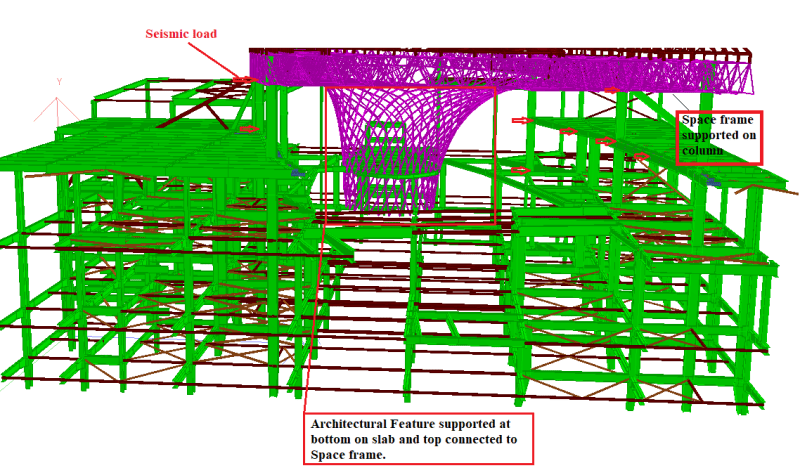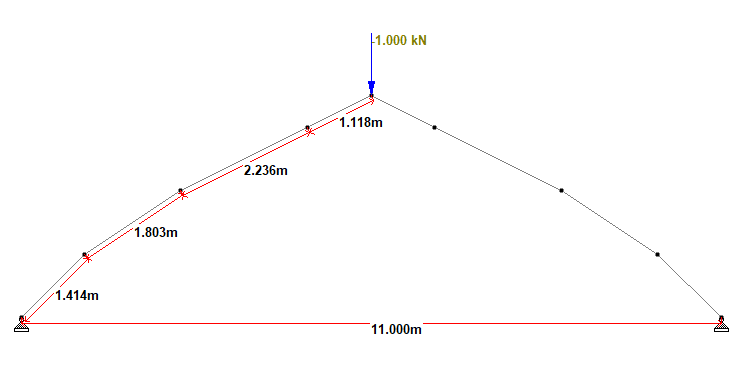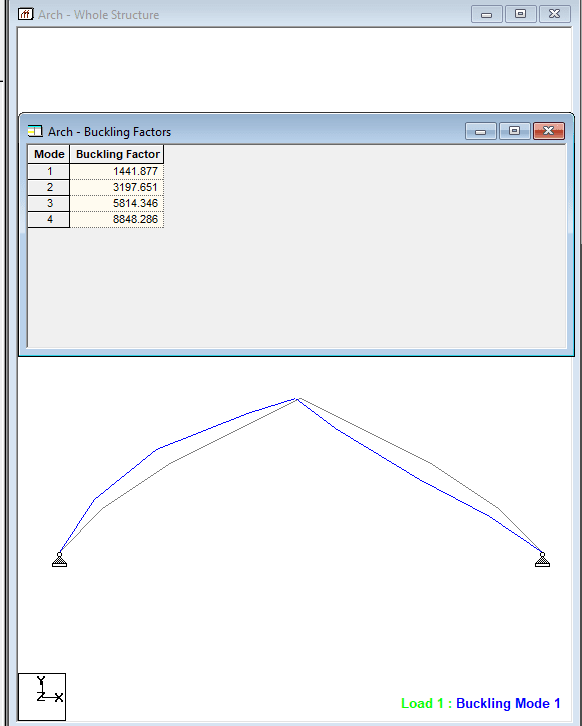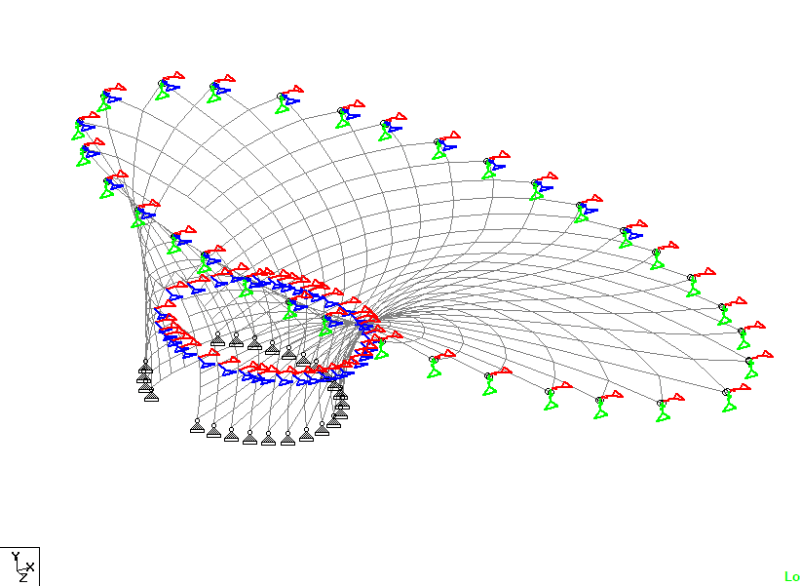Arbu, unless I'm mistaken the buckling analysis in STAAD which you are using is an 'elastic critical buckling analysis'. It is not a 'second order inelastic buckling analysis', which is what Klaus is referring to. I also don't agree in whole with what Klaus is noting, for stability all you need to do is the global analysis he is noting. This gives you the load at which a real member or group of members will fail. There is no need as far as I can tell to then do a further local buckling check? The buckling analysis simply captures the critical buckling behaviour of the 'system', this might be buckling over multiple members acting as a group like your analysis, so checking further local checks adds nothing to the answer you are after (happy to hear any views opposing to this as I'm not an expert in these things, but I know enough to be dangerous!)
A 'second order inelastic buckling analysis' needs to account directly for initial imperfections (i.e. the L/1000 imperfections in real members, and out of plumbness), effect of residual stresses (leads to partial plasticity as loads increase and resulting reduction in stiffness as you reach a plastic stress state, which combined with the imperfections rapidly increases 2nd order effects and hence increase plasticity until you form a plastic hinge that indicates the onset of inelastic buckling), & large and small P-delta effects. Like I noted STAAD does not do this I believe, you need software that does this type of analysis.
An 'elastic critical buckling analysis' does not account for these 2nd order effects. As I explained previously, you can modify the 'elastic critical buckling stress' to a real structural behaviour by applying the code buckling curves. I'll have a read through AISC and try outline how to do this, but it is covered in the Mastan2 modules that I have referenced previously. So if you are after references on how to do this I've mentioned Mastan2 several times, have you undertaken the stability fun modules as these will teach you the fundamentals on simple structures and perhaps address some of the fundamental questions you have?
I mentioned earlier also reading up on the Direct Analysis Method, this would seem like another path to take for your analysis (I've never used it in practice, but I understand it is geared towards the type of thing you are doing, where you are presented with 'what K do I use for my system?'). This method is intended to be a method for assessing stability when selection of a K factor is effectively impossible. Basically you reduce member stiffness (allows for residual stress effects), and apply notional loads to allow for the initial imperfection effects (L/1000 & out of plumbness). Then analyse the structure using a non-linear analysis. You then can design the members using the normal provisions using K=1.0 for all members using the approximated 2nd order design actions from your analysis. The analyses use of the notional loads and reduced stiffness's is intended as a means to directly account for the 2nd order effects and critical buckling mode, and effectively amplifies any design moments. If your design capacity ratio is sufficient, then the structure is deemed stable under that loadcase, if any members fail, then the structure is deemed unstable (increase members until stability is achieved). In a complex structure you might have numerous cases with notional loads to investigate the critical behaviour.
For references on the direct stiffness method I found the AISC Education account on YouTube has multiple video going through in detail how to apply these provisions and the basis for it.
To aid in your understanding of the concepts forget about your complex model for a while and create some simple models for which you know the answer and follow the code procedures using either an elastic critical buckling loads approach, or a direct analysis method (DAM) approach to show the same capacity.






